In April 2024, 300 tornadoes were recorded across the United States, which is the second highest number on record. Tropical Storm Hidaya hits East Africa. The death toll from persistent flooding and mudslides caused by heavy rains in southern Brazil has risen to 39. Forest fires in Chile have killed 51 people.
Forest fires in Chile have killed 51 people. The fire has already destroyed 26,000 hectares of forests
Forest fires raging in Chile in early May 2024 have killed at least 51 people, the country’s authorities report. The picturesque coastal region of Valparaiso, a popular tourist destination, is shrouded in smoke from massive fires fueled by unrelenting heat. Over the weekend, the thermometer here rose to 40 degrees Celsius, which aggravated the already difficult situation.
Residents of the city of Viña del Mar, located on the central coast, were forced to leave their homes due to the approaching disaster. The country’s President Gabriel Boric declared a state of emergency and curfew. A large-scale evacuation has been organized.
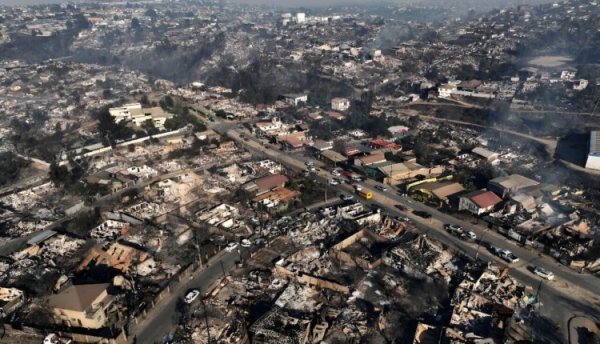
The fire has destroyed 26,000 hectares of forest in the central and southern regions, according to the national disaster management agency. Experts warn that weather conditions can only get worse.
The scale of the disaster is unprecedented. According to Chilean Interior Minister Carolina Toja, this is undoubtedly the deadliest fire in the country’s history. Argentina, which borders Chile, is also battling forest fires that have engulfed several regions.
Fire disaster in the Russian Angara region: two people died, dozens of houses were destroyed. Another woman is in serious condition
Fires at the beginning of May 2024, which engulfed the Lokomotiv, Ubskie Dachas and Victoria gardens, as well as the Aluminshchik SNT and dachas at 34 km of the Bratsk district of the Irkutsk region, led to the death of two men. As previously reported, the body of a man born in 1948 was found in the Lokomotiv SNT. Today, information was received about another victim – a man who died in a fire in the SNT “Aluminshchik”.
Firefighters continue to fight the raging elements. But gusty winds and dry weather complicate the task. Colleagues from Tulun arrived to help local crews. Air Forest Protection forces are also involved in the fire extinguishing effort.

According to the operational headquarters, the victims are being provided with all necessary assistance. This is how the Ministry of Internal Affairs works with those whose personal documents were lost in the fire. Also, on the instructions of the governor, the Minister of Social Development, Guardianship and Trusteeship, Vladimir Rodionov, arrived at the site to ensure work with fire victims. At the same time, the task force of the Government of the Irkutsk Region to coordinate work in connection with the introduction of an emergency regime, headed by Deputy Chairman of the Government Vladimir Chitorkin, is assessing the situation and the damage caused, and organizing assistance to people.
But ordinary residents were not left out: collection points for humanitarian aid were opened in the Bratsk district for fire victims who suffered during the fire.
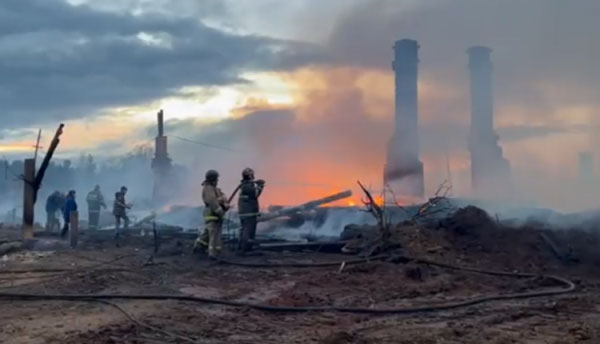
Torrential rains lash southern Brazil, leaving destruction in its wake. 39 people were killed and 74 were injured as a result of the rampant disaster
The death toll from persistent flooding and mudslides caused by heavy rains in southern Brazil in early May has risen to 39. The country’s officials announced the news on Friday, issuing dire warnings of further danger.
Rescue operations were carried out with great zeal, using boats and aircraft to clear the wreckage of destroyed infrastructure, including houses, bridges and roads, in search of numerous missing people.
Rising water levels in Rio Grande do Sul state have put unprecedented pressure on dams, and authorities have warned that the sprawling metropolis of Porto Alegre faces an imminent threat of flooding.
Governor Eduardo Leite, sounding the alarm, warned of a looming disaster, urging residents to prepare for the worst as incessant downpours left streets in the state capital, home to about 1.5 million people, inundated with floodwaters.
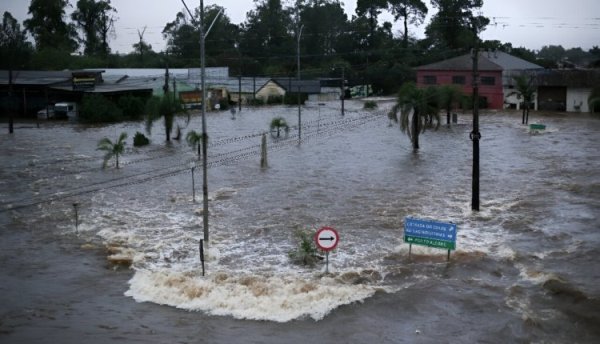
The state Department of Civil Defense reported statistics showing storm-related damage: 74 people were injured and more than 24,000 forced from their homes, a third of whom sought refuge in shelters; the number of missing people increased to 68. In total, the disaster affected about 350,000 people.
Authorities have now sounded the alarm about an “emergency situation” at four of the state’s dams, fraught with the risk of imminent collapse.
Meanwhile, water levels in the main Guiaba river rose by about 4.2 to 4.6 meters, making measurements impossible because instruments could not withstand the flooding, the mayor of Porto Alegre said. Moreover, the worst flood in history was recorded here in 1941, when the water level rose to 4.71 meters.
Elsewhere in the state, numerous communities were cut off from the outside world in what the governor of Leyte said was “the most catastrophic event in the history” of Rio Grande do Sul. People faced a lack of drinking water, telecommunications and electricity. Educational institutions remain closed across the state.
The country’s government sent planes, boats and more than 600 troops to the disaster zone to help with emergency relief efforts, including clearing roads, distributing relief supplies and setting up shelters.
Record rainfall associated with El Niño has caused unprecedented flooding in the southern Brazilian state of Rio Grande do Sul, leading to rising death tolls, infrastructure and economic destruction, and forecasts are grim. According to the Civil Defense of the state of Rio Grande do Sul, 78 people were confirmed dead, another 105 were missing and 175 were injured. Almost 19,000 people were left homeless, about 116,000 were evacuated and almost 850,000 were affected in 341 municipalities.
Also, according to the Rio Grande do Sul State Civil Defense, national authorities rescued 1,000 people during rescue and emergency operations. Brazilian President Lula da Silva toured the hardest-hit regions and announced an emergency package to help those affected. The pictures show the enormous scale of the flood. The airport in the state capital of Porto Alegre was closed, transport links and power supplies were cut off.
According to the World Meteorological Organization on its website, the natural disaster in Brazil and ongoing flooding in East Africa highlight the need for a more comprehensive response to El Niño and the impacts of climate change, as well as early warning for all, as called for by WMO at a special United Nations themed event. Nations May 1st.

Brazil’s National Meteorological and Hydrological Service, INMET, issued another “red” storm warning on May 6, due to heavy rainfall and moderate to localized thunderstorms, as well as a very high hydrological hazard. Weather conditions also affect northern Uruguay.
According to INMET, since April 27, most of the state of Rio Grande do Sul has been under the influence of constant heavy rains. In some regions, especially in the broad central valleys, plateaus, mountain slopes and large cities, rainfall exceeded 300 mm in less than a week. For example, in the municipality of Bento Gonçalves, precipitation reached 543.4 mm. In just three days, 258.6 mm of rain fell in Porto Alegre. This figure corresponds to more than two months of precipitation compared to the climate norm for April (114.4 mm) and May (112.8 mm).
In the period from late April to early May 2024, the influence of El Niño was still quite strong. This phenomenon, responsible for warming Pacific waters, helped block cold fronts and concentrate instability zone systems over Rio Grande do Sul. In addition to this, the much warmer temperature of the South Atlantic Ocean, located near the equatorial belt, also contributes to increased humidity, increasing precipitation. The transport of moisture from the Amazon and the temperature contrast with warmer air north of the Austral Region, as well as colder air south of Rio Grande do Sul, also contributed to the strengthening of the storms, INMET said.
Latin America and the Caribbean are suffering from record temperatures and natural disasters. Billions of dollars in damage, hundreds of deaths, spread of infections – just some of the consequences
Latin America and the Caribbean saw record temperatures in 2023, setting a new record for the region, the World Meteorological Organization (WMO) said on Wednesday. The combination of El Niño and unrelenting climate change has led to a cascade of devastating weather events, the report notes.
The UN agency highlighted the severe impacts of drought, extreme heat, heavy rains and the unprecedented storm on health, food security, energy stability and economic progress across the region.
El Niño, particularly in the second half of 2023, has exacerbated numerous extreme events culminating in record warming, coupled with rising temperatures and an increase in the frequency of severe hazards associated with human-caused climate change, according to WMO Secretary-General Celeste Saulo.
The report highlights that average temperatures in 2023 were the highest on record, with Mexico experiencing the fastest temperature rise in the region.
The sweltering heat that has engulfed large areas of Latin America, in particular large parts of Central America, has led to a reduction in maritime transit through the Panama Canal due to its shallowing.
Brazil, Peru, Bolivia, Paraguay and Argentina faced natural disasters amid unprecedented heat. Uruguay was teetering on the brink as its drinking water supplies dwindled alarmingly.
The report also highlights the onset of Hurricane Otis, which in October killed 51 people and caused more than $3 billion in damage to the famed Mexican coastal city of Acapulco.

According to the WMO, Brazil bore the brunt of catastrophic floods and landslides in 2023, resulting in loss of life, widespread economic collapse and massive population displacement.
In May 2024, the country was again trapped by floods that hit its southern state of Rio Grande do Sul, with the death toll exceeding one hundred.
According to the WMO, sea levels were rising at rates above the global average across much of the Atlantic Basin region, threatening coastal areas and small island nations.
The report also highlights that climate change-related disasters have affected agriculture and food security. An estimated 13.8 million people face severe food insecurity, especially in Central America and the Caribbean. Moreover, rising sea temperatures have led to a decline in fish catches, which has had a significant impact on countries such as Peru and Ecuador.
The region suffered an estimated $21 billion in economic losses in 2023, mostly due to hurricanes, with Hurricane Otis alone accounting for nearly half of all losses. And this is not the final figure, experts say.
The report also highlights the growing geographic spread of diseases such as malaria, driven by changing rainfall patterns and rising temperatures.
– More than three million cases of dengue fever were reported in America in 2019, the highest number on record. This number was exceeded in the first seven months of 2023, the report said.
The data collected, according to WMO, highlights the need for increased investment in forecasting and early warning systems throughout the region.
Tropical Storm Hidaya hits East Africa
Devastating floods in East Africa are leading to increased death tolls, destruction of infrastructure and crops, and the death of livestock and wildlife. The approaching tropical cyclone is expected to worsen the situation, bringing even more heavy rainfall to the hardest-hit countries, including the United Republic of Tanzania and Kenya.
Kenyan President William Ruto addressed the nation outlining a series of measures to deal with the emergency, including evacuations and emergency medical care. Dams are overflowing, roads and bridges are destroyed, schools are closed. According to him, as of May 3, 210 people were killed and many more wounded. However, the dangerous period is not over yet, as the situation is expected to worsen. Weather reports paint a grim picture. Rainfall will continue, increasing in both duration and intensity, through the end of this month and possibly beyond.
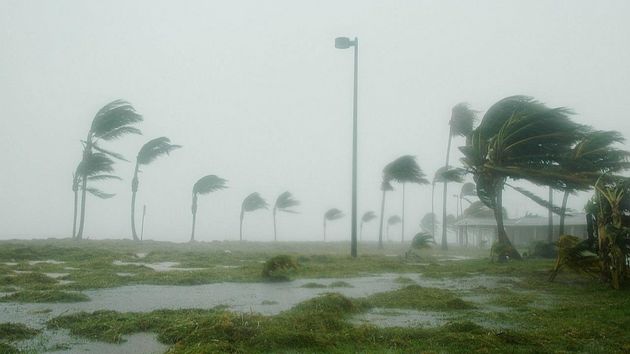
The ongoing disaster further highlights society’s vulnerability to weather, water and climate-related hazards and the need for early warning for everyone.
A weakening El Niño, along with a phenomenon known as the Indian Ocean Dipole, and high sea surface temperatures are playing a role, according to the World Meteorological Organization website. But excess energy trapped in the atmosphere and ocean by greenhouse gases produced by human activity also has a significant impact, increasing extreme weather conditions.
The WMO Regional Specialized Meteorological Center at Reunion, the Kenya Meteorological Department and the Tanzania Meteorological Agency have issued tropical cyclone warnings. The Kenya Meteorological Department is the first documented system to achieve tropical cyclone status in this low latitude region, making it historically significant for the north-west Southwestern Indian Ocean basin.
April 2024 in the United States became the second year in meteorological history for the number of tornadoes
According to preliminary data from the Storm Prediction Center, 300 tornadoes were recorded in the United States in April 2024, which is the second highest number on record. This is significantly higher than the average number of April tornadoes, which is 182 nationwide for the month. April 2011 remains at the top of this list, when meteorologists recorded 757 tornadoes.
While many of the observed tornadoes in the Great Plains may have been photogenic, they caused enormous damage, particularly in Nebraska, Iowa, Oklahoma, and Texas.
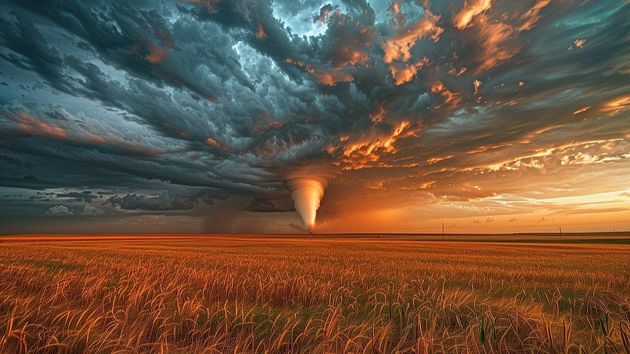
Typically, the most tornadoes in April occur in Mississippi, Alabama, Kansas, Oklahoma and Texas, but in April 2024, the largest number of these dangerous twisters were recorded in Nebraska and Iowa, which is not the norm for this time of year.
It is known that the peak of tornadoes in the United States, according to long-term averages, occurs in May. Given how active April was, Weather Nation is concerned that this trend will continue into May, as tornado activity early in the month is already confirming negative forecasts.




